Laki Senanayake
The Visionary whose Art blurred Boundaries

Figure 1 – The Visionary, Laki Senanayake
Laki Senanayake was more than just an artist – he was an innovator who defied categorization, seamlessly blending art with architecture, nature, and public spaces. A self-taught maestro, his works – ranging from intricate ink drawings to grand metal sculptures – are not merely standalone pieces but immersive experiences that transform the spaces they inhabit.
He collaborated closely with architectural giants like Geoffrey Bawa and Ulrik Plesner, infusing Sri Lankan modern architecture with a distinctive artistic sensibility. Yet, beyond his architectural sculptures, Laki’s work is a poetic reflection of his deep love for nature. From the lush forests of Diyabubula to the refined interiors of hotels and civic buildings, his creations continue to enchant and inspire.
In a career that spans decades, Laki has redefined the relationship between space, nature, and artistic expression, leaving behind a legacy that continues to shape Sri Lanka’s cultural landscape.
The Fusion of Art and Architecture
Laki Senanayake’s artistic philosophy was deeply intertwined with architecture, a relationship that began with his early work as a draughtsman at Edwards, Reid & Begg. His introduction to Geoffrey Bawa led to a lifelong collaboration, where Laki’s sculptures, murals, and decorative elements became integral to Bawa’s architectural masterpieces.
Some of his most striking contributions include:
- Enchanted Forest at Mirissa Hills
This intricate metalwork features a dense array of flora and fauna and serves as a sculptural separation between the lounge and dining space within the retreat

Figure 2 – The Enchanted Forest sculpture viewed from the lounge area of Mirissa Hills
- The Brass Peacock at Bentota Beach Hotel

Figure 3 – The Brass Peacock
- The Sri Lankan Parliament Chandeliers
Majestic palm-tree-inspired chandeliers

Figure 4 – The Chandelier at the Main Chamber of the Parliament
These works are not mere embellishments but fundamental components of architectural storytelling. Laki’s ability to transform spaces through art blurred the line between function and aesthetics, proving that art could be lived rather than just observed.
Public Art and Large-Scale Installations
Beyond private commissions, Laki’s sculptures became part of Sri Lanka’s public landscape, engaging with broader audiences. His large-scale works reflect both his artistic mastery and his ability to capture Sri Lanka’s cultural and natural heritage.
- The Bo Leaf Sculpture at the Osaka World Expo (1970)
A monumental representation of Sri Lanka’s Buddhist heritage on an international stage.

Figure 5 – The Ceylon Pavilion at Expo Osaka 1970 – Bo Leaf sculpture depicted at the centre
- The Sculptural Staircase at Jetwing Lighthouse, Galle
A dramatic metal relief depicting the historic Battle of Randeniya, seamlessly merging art with the structure of the staircase.

Figure 6 – A swirling mass of Dutch and Sinhalese warriors at the stairway of Jetwing Lighthouse, Galle
- Foliage and Avian Sculptures at Heritance Kandalama
Metal birds and trees that organically merge with the eco-conscious hotel’s design, reinforcing its dialogue with nature.

Figure 7 – The Owl at Kandalama
These works extended his artistic reach beyond galleries, embedding his vision into public and commercial spaces.
The Art of Line and Detail
Apart from his sculptures and architectural artworks, his paintings and intricate ink drawings reveal an equally compelling side of his artistry. His ability to capture movement, texture, and depth in a two-dimensional medium made his work more than mere illustrations – they were expressions of his deep connection to the natural world.
Laki’s botanical studies and wildlife sketches are some of his most recognizable works. His pen-and-ink drawings of trees, birds, and foliage were created with meticulous detail, often reflecting a near-scientific approach to depicting Sri Lanka’s biodiversity. Yet, unlike traditional botanical illustrations, his works carried an organic fluidity, making nature feel alive on paper
- Etched sun-head on the front door of Geoffrey Bawa’s Number 11 residence
The translucent panel on the front door to the home contains an etching done by Laki Senanayake.

Figure 8 – Sun-head etched into the translucent panel of the front door
- Sri Lanka’s Currency Note Illustrations (1976)
Laki Senanayake was personally approached by Herbert Tennekoon, the Governor of the Central Bank of Sri Lanka, to design a new series of banknotes. Breaking away from the traditional use of temples and cultural symbols, Laki chose to depict Sri Lanka’s rich fauna and flora, making the notes visually distinctive and deeply connected to the island’s natural heritage. However, these notes are no longer in circulation, due to issues that arose with counterfeiting.

Figure 9 – Red-faced Malkoha detail for the 50 rupees note
- The Botanical and Wildlife Drawings for Books and Private Collections
Laki produced detailed ink illustrations of Sri Lankan flora and fauna, many of which were commissioned for publications and scientific studies.


Figure 10– Treescapes – Drawings from the Royal Botanical Garden of Peradeniya
Diyabubula -The Artist’s Sanctuary
Diyabubula, Laki Senanayake’s private retreat in Dambulla, was and still is, the purest expression of his artistic philosophy. Named “bubbling water” for its natural springs, it was more than just a home – it was a living artwork where sculpture, architecture, and nature merged seamlessly.

Figure 11 – Diyabubula, the Artists’ Oasis
It was an artistic experiment unlike any of his commissioned works, where creativity had no external constraints. Unlike his sculptures and murals designed for hotels and civic spaces, which had to complement existing architecture, this sanctuary allowed Laki to let his art grow with nature. His sculptures of birds, tree-like structures, and surreal human figures seem to emerge organically from the dense greenery, their forms weathering and evolving with time, as if they always belonged there.

Figure 12 – Whimsical animal sculptures that seem to emerge from nature itself

Figure 13 – Wild boar by the water, an instance of sculpted and living fauna meeting
The structures within Diyabubula itself are works of art. Laki crafted tree-house-style dwellings and open pavilions that blend into the forest, using natural materials that allow the buildings to merge seamlessly with their surroundings. The architectural elements – pillars wrapped in vines, wooden walkways disappearing into thick foliage, and metalwork entwined with creeping plants – make it feel less like a constructed space and more like a place that has grown over time through nature itself.

Figure 14 – Water Villas, made from rail sleepers and other recycled wood, each has two floors.

Figure 15 – Bamboo Grove villa has a triangular transparent roof under a canopy of bamboo
Beyond its artistic brilliance, Diyabubula serves as a spiritual retreat and a hub for artistic exchange. Laki often welcomed guests -fellow artists, architects, environmentalists, and friends -who were drawn to this oasis of creativity. Conversations about art, ecology, and philosophy continue to fill the air, reinforcing the idea that art is not just about creation but about interaction, experience, and shared inspiration.
A Lasting Legacy
Laki Senanayake’s influence on Sri Lankan art and architecture remains profound, shaping how creativity is integrated into the spaces we inhabit.
His sculptures continue to enrich the built environment, proving that art belongs not just to galleries but within the everyday world. His botanical illustrations serve as both artistic treasures and scientific records, capturing the intricate beauty of Sri Lanka’s flora. Above all, his philosophy of merging art and nature stands as a timeless lesson in sustainability and creative harmony.
To walk through Kandalama, admire the Hilton Colombo mural, or step into the sanctuary of Diyabubula is to experience Laki’s vision – one where art is not confined but exists as an organic, living force. His legacy reminds us that the most powerful creativity transcends boundaries, flowing effortlessly between disciplines, landscapes, and the human spirit.
Linked Articles:
https://artra.lk/visual-art/laki-senanayake-edition-lakis-artistic-influences
https://groundviews.org/2021/06/05/the-extraordinary-life-times-and-talent-of-laki-senanayake/
https://www.life.lk/article/entertainment/Celebrating-Laki-Senanayake-AND-his-Artistry/33/20444
https://thuppahis.com/2021/06/06/laki-senanayake-as-i-knew-him/
https://www.artdesigncafe.com/laki-senanayake-1997
https://notes.lakdiva.org.lk/cbc/1979lkff/laki/
Image Credits:
Figure 1 – https://www.ft.lk/FT-Lite/the-lost-collection/6-565670
Figure 2 – Ganindu Balasuriya Photography https://www.ganidubalasuriya.com/post/mirissa-hills
Figure 3 – https://www.artra.lk/applied-art/exploring-the-artistic-charms-of-cinnamon-bentota-beach
Figure 4 – https://www.archnet.org/sites/3033
Figure 5 – https://en.worldfairs.info/expopavillondetails.php?expo_id=18&pavillon_id=1429
Figure 6 – https://www.archnet.org/sites/3046
Figure 10 – Drawings from the Royal Botanical Garden of Peradeniya https://web.facebook.com/photo?fbid=343374123721695&set=pcb.343381983720909
Figure 11 – https://groundviews.org/2021/06/05/the-extraordinary-life-times-and-talent-of-laki-senanayake/
Figure 12 – https://lmd.lk/a-tribute-to-greatness/
Figure 13 – https://www.sundaytimes.lk/090628/Magazine/sundaytimesmagazine_00.html
Figure 14 – https://www.diyabubula.com/en/
Figure 15 – https://web.facebook.com/photo/?fbid=703603968478953&set=pcb.703606451812038
Related Posts
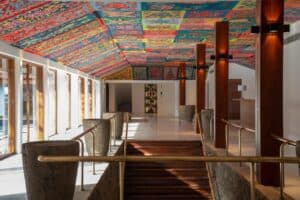
How Traditional Sri Lankan Textiles Shape Modern Contemporary Interiors
November 12, 2025
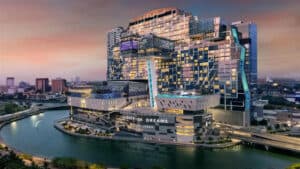
City of Dreams
October 22, 2025
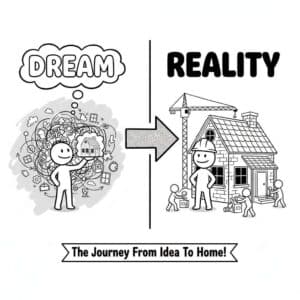
“From Dream to Reality” – The Sri Lankan Building Process
October 8, 2025
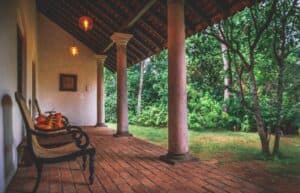
Why Sri Lankans Love Verandahs
October 1, 2025
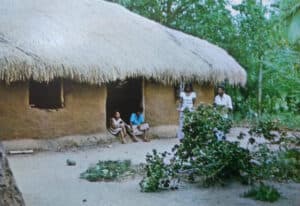
Why Old Sri Lankan Houses Always Felt Cooler?
September 10, 2025
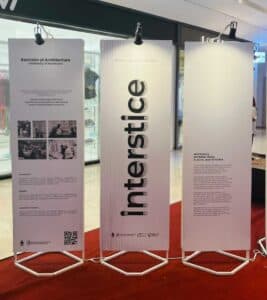
Interstice – Where Architecture Meets the In-Between
September 3, 2025
